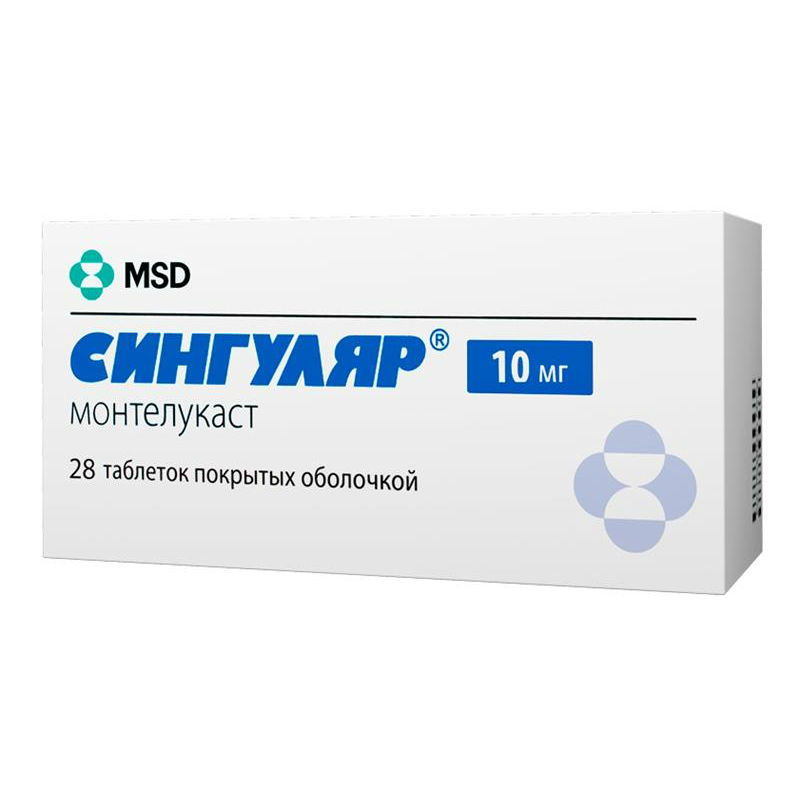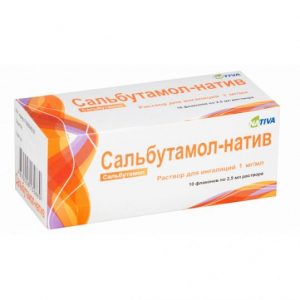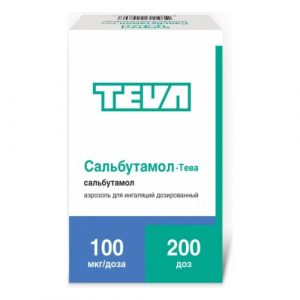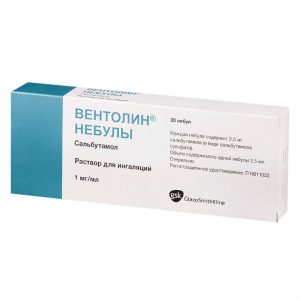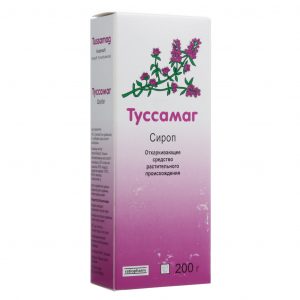Description
Release form
28 pcs. in the package: 4 blisters of 7 pcs. A pack of cardboard.
Pharmacological action of
Leukotriene receptor antagonist. A drug for the treatment of bronchial asthma and allergic rhinitis. Pharmacotherapeutic group: Leukotriene receptor
antagonist. Pharmacological action
. Leukotriene receptor antagonist. Cysteinyl leukotrienes LTC4, LTD4, LTE4 are strong mediators of inflammation – eicosanoids, which are secreted by different cells, including mast cells and eosinophils.
These important pro-asthmatic mediators bind to cysteinyl leukotriene receptors. Cysteinyl leukotriene receptors of type I (CysLT1 receptors) are present in the human airways (including in the cells of the smooth muscles of the bronchi, macrophages) and other proinflammatory cells (including eosinophils and some myeloid stem cells).
Cysteinyl leukotrienes correlate with the pathophysiology of bronchial asthma and allergic rhinitis. In asthma, leukotriene-mediated effects include bronchospasm, increased mucus secretion, increased vascular permeability, and increased eosinophils. In allergic rhinitis, after exposure to the allergen, cysteinyl leukotrienes are released from the pro-inflammatory cells of the nasal mucosa during the early and late phases of the allergic reaction, which is manifested by symptoms of allergic rhinitis. An intranasal test with cysteinyl leukotrienes demonstrated an increase in the resistance of the airways of the nasal passages and a symptom of nasal obstruction.
Montelukast is a highly active oral drug that significantly improves inflammation in bronchial asthma. According to biochemical and pharmacological analysis, montelukast with high affinity and selectivity binds to CysLT1 receptors without interacting with other pharmacologically important receptors in the respiratory tract (such as prostaglandin receptors, cholinergic or Adrenoreceptors). Montelukast inhibits the physiological effect of the cysteinyl leukotrienes LTC4, LTD4, LTE4 by binding to CysLT1 receptors, without exerting a stimulating effect on these receptors.
Montelukast inhibits CysLT receptors in the airways, as evidenced by the ability to block the development of bronchospasm in response to inhalation of LTD4 in patients with bronchial asthma. A dose of 5 mg is sufficient to relieve bronchospasm induced by LTD4.
Montelukast causes bronchodilation within 2 hours after ingestion and may complement bronchodilation caused by 2-adrenergic agonists.
The use of montelukast in doses of more than 10 mg / day does not once increase the effectiveness of the drug.
Pharmacokinetics
Absorption. After oral administration, montelukast is rapidly and almost completely absorbed from the gastrointestinal tract. In adults, when taken on an empty stomach, coated tablets at a dose of 10 mg Cmax in plasma are reached after 3 hours. Average oral bioavailability is 64%. Food intake does not affect Cmax in blood plasma and bioavailability of the drug.
distribution. The binding of montelukast to plasma proteins is more than 99%. Vd averages 8-11 liters. Studies with radioactively labeled montelukast conducted in rats, indicate minimal penetration through the BBB. In addition, concentrations of the labeled drug 24 hours after administration were minimal in all other tissues. When taking montelukast at a dose of 10 mg 1 time / day, moderate (about 14%) cumulation of the active substance in the plasma is observed.
Metabolism. Montelukast is actively metabolized in the liver. When used in therapeutic doses, the concentration of montelukast metabolites in plasma in equilibrium in adults and children is not determined. In vitro studies using human liver microsomes have shown that P450 cytochrome isoenzymes: 3A4, 2C8 and 2C9 are involved in the metabolism of montelukast. According to the results of in vitro studies in human liver microsomes, montelukast in therapeutic plasma concentrations does not inhibit cytochrome P450 isoenzymes: 3A4,2C9, 1A2, 2A6, 2C19 and 2D6.
Withdrawal. Montelukast plasma clearance in healthy adults is an average of 45 ml / min. After ingestion of radioactively labeled Montelukast, 86% of its amount is excreted in the feces for 5 days and less than 0.2% in the urine, which confirms that Montelukast and its metabolites are excreted almost exclusively with bile. T1 / 2 of montelukast in young healthy adults is from 2.7 to 5.5 hours. The pharmacokinetics of montelukast remains almost linear when ingested doses of more than 50 mg. When taking montelukast in the morning and evening hours, differences in pharmacokinetics are not observed.
Pharmacokinetics in special clinical cases. The pharmacokinetics of montelukast in women and men is similar. There were no differences in the clinically significant pharmacokinetic effects in patients depending on race. When taken orally coated tablets at a dose of 10 mg 1 time / day, the pharmacokinetic profile and bioavailability are similar in elderly and young patients. Patients with mild to moderate hepatic insufficiency and clinical manifestations of cirrhosis showed a slowdown in Montelukast metabolism, accompanied by an increase in AUC of approximately 41% after a single dose of 10 mg. The excretion of montelukast in these patients is slightly increased compared with healthy subjects (T1 / 2 averages 7.4 hours).
Montelukast dose adjustment for patients with mild to moderate hepatic insufficiency is not required. There is no data on the nature of the pharmacokinetics of montelukast in patients with severe hepatic insufficiency (more than 9 points on the Child-Pugh scale). Since montelukast and its metabolites are not excreted in the urine, the pharmacokinetics of montelukast in patients with renal failure has not been evaluated. Dose adjustment in this category of patients is not required.
Indications
Prevention and long-term treatment of bronchial asthma in adults and children 6 years of age and older, including:
Prevention of day and night symptoms of the disease
Treatment of bronchial asthma in patients with hypersensitivity to acetylsalicylic acid
Prevention of bronchospasm caused by physical exertion.
Stopping the day and night symptoms of seasonal and / or year-round allergic rhinitis (in adults and children 6 years of age and older).
Contraindications
Children under 6 years of age
Phenylketonuria
Hypersensitivity to the drug.
Use during pregnancy and lactation
There have been no clinical studies of the drug Singular involving pregnant women. The singular should be used during pregnancy and during breastfeeding only in cases where the expected benefit to the mother outweighs the potential risk to the fetus or child.
During the post-registration use of the drug Singular, the development of congenital limb defects in newborns whose mothers took Singular during pregnancy was reported. Most of these women also took other medications to treat asthma during pregnancy. A causal relationship between taking the drug Singular and the development of congenital limb defects has not been established.
It is not known whether montelukast with breast milk is excreted. Since many drugs are excreted in breast milk, it is necessary to take this into account when prescribing the drug Singular to breast-feeding mothers.
Special instructions
The effectiveness of the drug Singular for oral administration in the treatment of acute attacks of bronchial asthma has not been established. Therefore, Singular in tablets is not recommended for the treatment of acute attacks of bronchial asthma. Patients should be instructed to always have emergency medications with them to relieve asthma attacks (short-acting inhaled beta2-agonists).
Do not stop taking the drug Singular during an exacerbation of asthma and the need to use emergency drugs (short-acting inhaled beta2-agonists) to stop attacks.
Patients with a confirmed allergy to acetylsalicylic acid and other NSAIDs should not take these drugs during the treatment with Singular, since Singular, while improving respiratory function in patients with allergic bronchial asthma, nevertheless cannot completely prevent bronchoconstriction caused by NSAIDs.
The dose of inhaled GCS used simultaneously with the drug Singular can be gradually reduced under the supervision of a doctor, however, a sharp replacement of inhaled or oral GCS with the drug Singular cannot be carried out.
Neuropsychiatric disorders have been described in patients taking Singular. Considering that these symptoms could be caused by other factors, it is not known whether they are associated with the administration of the drug Singular. The physician needs to discuss these side effects with patients and / or their parents / guardians. Patients and / or their guardians need to be explained that in case of the appearance of such symptoms, it is necessary to inform the attending physician about this.
Reducing the dose of systemic corticosteroids in patients receiving anti-asthma drugs, including leukotriene receptor blockers, was rarely accompanied by the appearance of one or more of the following reactions: eosinophilia, rash, worsening pulmonary symptoms, cardiological complications and / or neuropathy, sometimes diagnosed as Charge-Strauss syndrome , systemic eosinophilic vasculitis. Although a causal relationship between these adverse reactions and therapy with antagonists of leukotriene receptors has not been established, with a decrease in the dose of systemic corticosteroids in patients receiving Singular, care must be taken and appropriate clinical observation should be made.
10 mg film-coated tablets contain lactose monohydrate. Patients with a rare form of hereditary galactose intolerance, congenital lactase deficiency or glucose-galactose malabsorption should not be prescribed Singular in this dosage form.
Influence on the ability to drive vehicles and work with mechanisms.
There is no evidence to show that taking the drug Singular affects the ability to drive a car or moving machinery.
Use in cases of impaired liver function
For patients with mild or moderate impairment of liver function, a special dose selection is not required.
There is no data on the nature of the pharmacokinetics of montelukast in patients with severe hepatic insufficiency (more than 9 points on the Child-Pugh scale).
Use in cases of impaired renal function
For patients with renal failure, a special dose selection is not required.
Use in children
Contraindication: children under 6 years of age. Children aged 6 to 14 years are prescribed a dose of 5 mg (1 tab. Chewing) / day. Dose selection for this age group is not required.
Use in elderly patients
For elderly patients, a special dose selection is not required.
Composition
1 tablet contains:
Main substance:
Montelukast sodium 10.4 mg (which corresponds to the content of montelukast 10 mg).
Excipients:
Hyprolose (hydroxypropyl cellulose) – 4 mg
Microcrystalline cellulose – 89.3 mg
Lactose monohydrate – 89. 3 mg
Croscarmellose sodium – 6 mg
Magnesium stearate – 1 mg.
Shell composition:
Hyprolose (hydroxypropyl cellulose) – 1.73 mg
Hypromellose (methylhydroxypropyl cellulose) – 1.73 mg
Titanium dioxide (E171) – 1.5 mg
Iron oxide red (E172) – 0.004 mg srdlp yellow (0.037 mg srdlp yellow) oxide srdlp yellow (0.017 mg srdlp yellow) Carnauba wax – 0.006 mg.
Dosage and administration of
The drug is taken orally 1 time / day, regardless of food intake. For the treatment of bronchial asthma, the Singular should be taken in the evening. In the treatment of allergic rhinitis, the drug can be taken at any time of the day.
In case of combined pathology (bronchial asthma and allergic rhinitis), the drug should be taken in the evening.
For adults and adolescents aged 15 years and older, the drug is prescribed at a dose of 10 mg (1 tablet, coated) / day.
General recommendations
The therapeutic effect of the drug Singular on indicators reflecting the course of bronchial asthma develops during the first day. The patient should continue to take Singular both during the period of achieving control over the symptoms of bronchial asthma, and during periods of exacerbation of bronchial asthma.
For elderly patients, patients with renal failure, as well as patients with mild or moderate hepatic impairment, as well as gender-specific special dose selection is not required.
Purpose of the drug Singular simultaneously with other types of treatment for bronchial asthma
The drug Singular can be added to the treatment of a patient with bronchodilators and inhaled corticosteroids.
Side effects
In general, the drug Singular is well tolerated by patients. Side effects are usually mild and, as a rule, do not require discontinuation of the drug. The overall incidence of side effects during treatment with Singular is comparable to their frequency with placebo.
Children aged 2 to 5 years with bronchial asthma
573 patients aged 2 to 5 years participated in clinical trials of the drug Singular. In a 12-week, placebo-controlled clinical trial, the only adverse event (AE) rated as associated with taking the drug was observed in> 1% of patients taking the drug Singular, and more often than in the group of patients taking a placebo, there was a thirst. Differences in the frequency of this AE between the two treatment groups were statistically insignificant.
A total of 426 patients aged 2 to 5 years received treatment with Singular for at least 3 months, 230 for 6 months or more, and 63 patients for 12 months or more. With longer treatment, the AE profile has not changed.
Children 2 to 14 years old with seasonal allergic rhinitis
280 patients aged 2 to 14 years participated in a 2-week, placebo-controlled clinical trial using the Singular drug to treat seasonal allergic rhinitis. Patients took Singular 1 time / day in the evening and generally well tolerated. The safety profile of the drug in children was similar to the safety profile of placebo. In this clinical study, AEs that were considered to be associated with taking the drug were not observed, would be observed in? 1% of patients taking Singular, and more often than in the group of patients taking placebo.
Children 6 to 14 years old with bronchial asthma
The safety profile of the drug in children was generally similar to that of adults and comparable to the placebo safety profile.
In an 8-week, placebo-controlled clinical trial, the only AE rated as drug-related was observed in> 1% of patients taking Singular, and more often than in the group of patients taking placebo, there was a headache. The difference in frequency between the two treatment groups was statistically insignificant.
In studies evaluating the growth rate, the safety profile in patients of this age group corresponded to the previously described safety profile of the drug Singular. During longer treatment (more than 6 months), the AE profile did not change.
Adults and children 15 years of age and older with bronchial asthma
In two 12-week placebo-controlled clinical trials with a similar design, the only side effects rated as drug-related were observed in? 1% of patients taking Singular and more often than in the placebo group of patients, there was abdominal pain and headache. Differences in the frequency of these side effects between the two treatment groups were statistically insignificant. With a longer treatment (for 2 years), the side effect profile has not changed.
Adults and children 15 years of age and older with seasonal allergic rhinitis
Patients took Singular 1 time / day in the morning or in the evening, in general, the drug was well tolerated. The safety profile of the drug was similar to the safety profile of placebo. In placebo-controlled clinical trials, AEs that were considered to be associated with taking the drug were not observed, would be observed in? 1% of patients receiving Singular, and more often than in the group of patients taking placebo. In a 4-week, placebo-controlled clinical trial, the safety profile of the drug was similar to that in 2-week trials. The frequency of drowsiness when taking the drug in all studies was the same as when taking a placebo.
Adults and children 15 years of age and older with perennial allergic rhinitis
Patients took Singular 1 time / day in the evening, in general, the drug was well tolerated. The safety profile of the drug was similar to the safety profile observed in the treatment of patients with seasonal allergic rhinitis and with placebo. In these clinical trials, AEs that were regarded as associated with the drug were not observed, would be observed in? 1% of patients receiving Singular ®, and more often than in the group of patients receiving placebo. The frequency of drowsiness when taking the drug was the same as when taking a placebo.
Generalized analysis of clinical trial results
A generalized analysis of 41 placebo-controlled clinical trials (35 studies involving patients aged 15 years and older, 6 studies involving patients aged 6 to 14 years) was performed using approved methods for assessing suicide. Among 9929 patients receiving Singular and 7780 patients receiving placebo in these studies, 1 patient with suicidal mood was identified in the group of patients receiving Singular. None of the treatment groups committed suicide, suicidal attempts, or other preparatory actions that indicated suicidal behavior.
A separate analysis was conducted of 46 placebo-controlled clinical trials (35 studies involving patients aged 15 years and older and 11 studies involving patients aged 3 months to 14 years) to assess adverse behavioral effects. Among 11 673 patients taking Singular in these studies and 8827 placebo, the percentage of patients with at least one adverse behavioral effect was 2.73% among patients receiving Singular ® and 2.27% among patients receiving placebo odds ratio amounted to 1.12 (95% confidence interval [0.93 1.36]).
AEs recorded during post-registration use of
Infectious and parasitic diseases: upper respiratory tract infections.
From the side of the blood coagulation system: increased tendency to bleeding.
From the side of the immune system: hypersensitivity reactions, incl. anaphylaxis is very rare (
From the psyche: agitation (including aggressive behavior or hostility), anxiety, depression, disorientation, impaired attention, pathological dreams, hallucinations, insomnia, memory impairment, psychomotor activity (including irritability, anxiety and tremor ), somnambulism, suicidal thoughts and behavior (suicidality).
From the nervous system: dizziness, drowsiness, paresthesia / hypesthesia is very rare (
From the cardiovascular system: heart palpitations. srdl kp From the respiratory system: nosebleeds, pulmonary eosinophilia.
From the digestive system: diarrhea, dyspepsia, nausea, vomiting, pancreatitis.
On the part of the liver and biliary tract: an increase in the activity of ALT and ACT in the blood is very rare (
On the part of the skin and subcutaneous tissues: tendency to form hematomas, erythema nodosum, erythema multiforme, pruritus, rash.
Allergic reactions: angioedema, urticaria).
From the musculoskeletal system: arthralgia, myalgia, including muscle cramps.
From the urinary system: enuresis in children
General reactions: asthenia (weakness) / fatigue, edema, pyrexia.
Drug Interactions
The singular can be prescribed together with other drugs traditionally used for the prevention and long-term treatment of bronchial asthma and / or the treatment of allergic rhinitis. Montelukast in the recommended therapeutic dose did not have a clinically significant effect on the pharmacokinetics of the following drugs: theophylline, prednisone, prednisolone, oral contraceptives (ethinyl estradiol / norethindrone 35/1), terfenadine, digoxin and warfarin.
With the simultaneous administration of phenobarbital, the AUC value of Montelukast decreases by about 40%, but this does not require changes in the dosage regimen of the drug Singular.
In vitro studies have found that montelukast inhibits the CYP2C8 isoenzyme. However, when studying the drug interaction in vivo of montelukast and rosiglitazone (metabolized with the participation of the CYP2C8 isoenzyme), there was no confirmation of the inhibition of the CYP2C8 isoenzyme by montelukast. Therefore, in clinical practice, the effect of montelukast on CYP2C8-mediated metabolism of a number of drugs, including paclitaxel, rosiglitazone, repaglinide.
In vitro studies have shown that montelukast is a substrate of CYP2C8, 2C9 and 3A4. Data from a clinical study of drug interactions in relation to montelukast and gemfibrozil (an inhibitor of both CYP2C8 and 2C9) demonstrate that gemfibrozil increases the effect of systemic exposure to montelukast by 4.4 times. Co-administration of itraconazole, a potent inhibitor of CYP3A4, together with gemfibrozil and montelukast did not lead to an additional increase in the effect of systemic exposure to montelukast. The effect of gemfibrozil on the systemic effects of montelukast cannot be considered clinically significant based on safety data when used in doses exceeding the approved dose of 10 mg for adult patients (for example, 200 mg / day for adult patients for 22 weeks and up to 900 mg / day for patients taking the drug for about one week, no clinically significant adverse effects were observed).
Thus, when co-administered with gemfibrozil, dose adjustment of montelukast is not required. According to the results of in vitro studies, clinically significant drug interactions with other known CYP2C8 inhibitors (e.g., trimethoprim) are not expected. In addition, the combined administration of montelukast with itraconazole alone did not lead to a significant increase in the effect of systemic exposure to montelukast.
Combined treatment with bronchodilators
Singular is a reasonable complement to monotherapy with bronchodilators, if the latter do not provide adequate control of bronchial asthma. Upon reaching the therapeutic effect of treatment with the drug Singular, a gradual reduction in the dose of bronchodilators can begin.
Combined treatment with inhaled corticosteroids
Treatment with Singular provides an additional therapeutic effect in patients using inhaled corticosteroids. Upon reaching stabilization, you can begin to gradually reduce the dose of corticosteroids under the supervision of a doctor. In some cases, the complete cancellation of inhaled GCS is acceptable, however, a sharp replacement of inhaled corticosteroids with a Singular is not recommended.
Overdose
Overdose symptoms were not detected during clinical trials of long-term (22 weeks) treatment with Singular adult patients with bronchial asthma in doses up to 200 mg / day, or during short (about 1 week) clinical studies when taking the drug in doses up to 900 mg / day.
There have been cases of acute overdose of the drug Singular (intake of at least 1000 mg / day) in the post-registration period and during clinical trials in adults and children. Clinical and laboratory data showed the comparability of the safety profiles of the drug Singular in children, adults and elderly patients. The most common symptoms were thirst, drowsiness, vomiting, psychomotor agitation, headache and abdominal pain. These side effects are consistent with the safety profile of the drug Singular.
Treatment: symptomatic treatment. There is no special information on the treatment of an overdose of the drug Singular. Data on the effectiveness of peritoneal dialysis or hemodialysis of montelukast are not available.
Storage conditions
The product should be stored out of reach of children, protected from moisture and light at a temperature not exceeding 30 ° C.
Expiration is 3 years.
Montelukast active substance
Terms of delivery from pharmacies
Prescription
Form of Treatment
tablets
Appointment
Vzrosl m on purpose doctor
Indications
Bronchial asthma, bronchospasm
Possible product names
Singular tablets 10 mg, 28 pcs.
